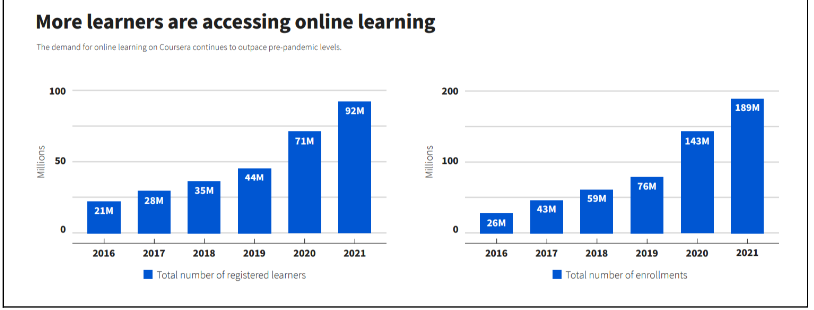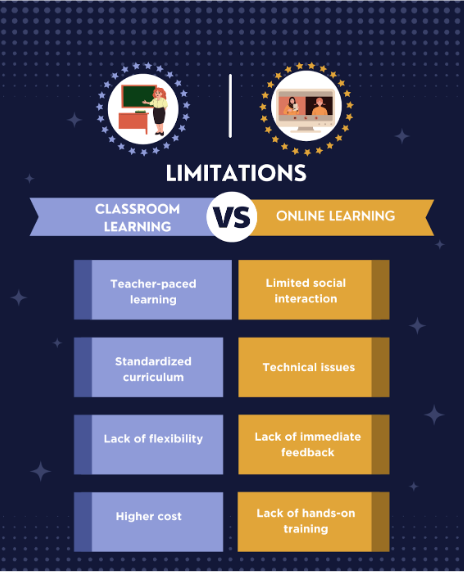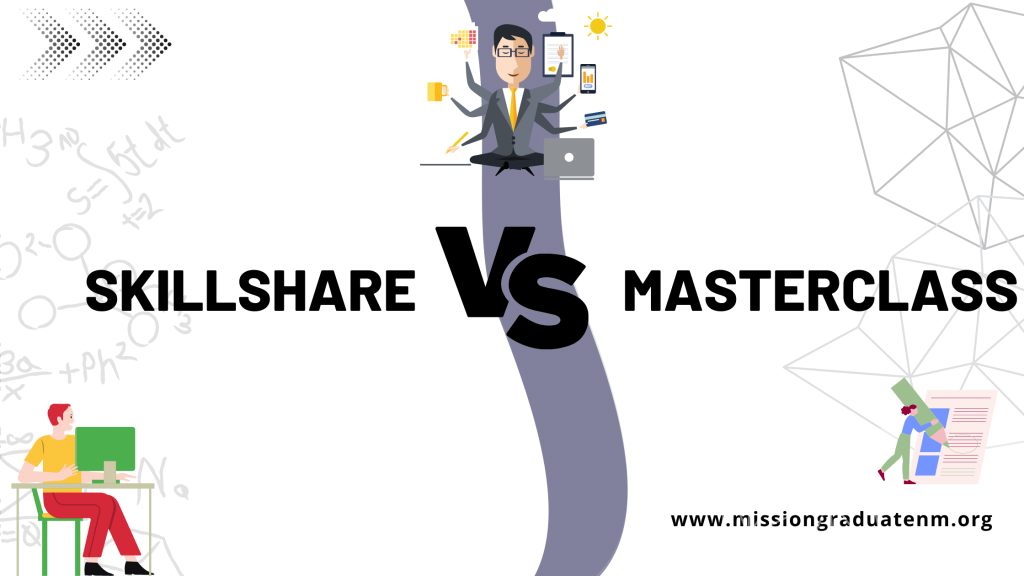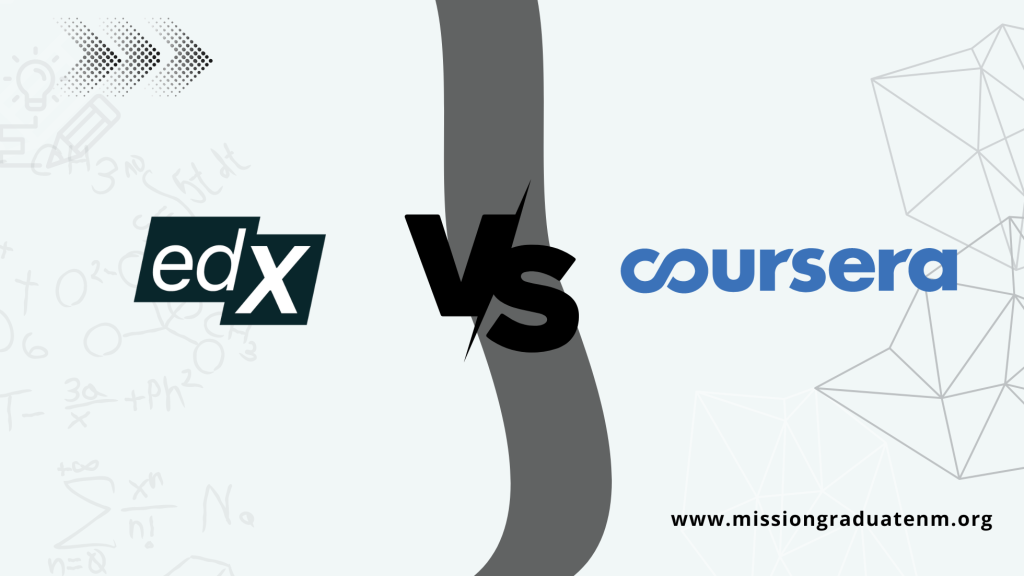The COVID-19 pandemic has given rise to a new debate: classroom learning vs online learning. While the question ‘Which is better?’ might seem straightforward, the answer is more complex.
In classroom learning, you get face-to-face time with your teacher. You can interact with your classmates & share your notes. You don’t need to worry about your internet connection. It’s just you, your notebook, and your teacher!
On the other hand, online learning allows you to learn at your own pace and offers a lot of flexibility. You can rewind, pause, or fast-forward your lectures as often as needed.
In this blog, I’ll discuss the pros and cons of both learning methods. This will help you choose the correct learning method based on your learning needs.
The Rise Of Online Learning
The education sector has significantly shifted towards online learning. Thanks to the pandemic and advancements in technology!
Online education is expected to grow by 8.61% annually (CAGR 2024-2028), as per Statista estimates.
Coursera’s 2021 Impact Report paints a clear picture of this growth.
According to this report, registrations for Coursera’s online courses increased by about 7 million annually from 2016 to 2018. However, registrations tripled in 2020 and continued to grow in 2021, reaching 92 million.

Course enrolment data shows a similar pattern. Enrollments doubled in 2020 and increased by 32% in 2021, reaching a peak of 189 million.
These statistics highlight the exponential growth of online learning.
Student Preferences –Online Learning or Classroom Learning?
A study by Tyton Partners titled ‘Time for Class 2023’ surveyed over 2,000 students. It revealed a significant shift in student preferences. It found that 69% of students are more interested in a fully online or hybrid learning mode than traditional classroom learning.
This shows that most students favor online learning as it offers higher flexibility and accessibility.
Benefits Of Online Learning For Students
Let’s first understand the benefits of online learning.
- More Flexibility
Online education allows you to learn at your own pace & terms. You can move through the material as quickly or slowly as needed. A survey done by Bay Atlantic University found that more than 6 in 10 online students chose online learning because it fitted perfectly with their busy lives.
You can fit your studies around your schedule, whether early mornings, late evenings, or even weekends.
- Higher Information Retention
Online learning offers a mix of learning materials beyond textbooks. This includes video lectures, interactive exercises, and multimedia presentations. It helps you improve your understanding and makes the learning process more engaging.
Studies reveal that you only remember about 10% of what you read. But you remember about 95% when you learn through audio-visual content.
These numbers show that online learning is excellent for information retention. It keeps you actively involved in the learning process.
- Enhanced Accessibility
Online learning allows you to access recorded lectures and downloadable study material anytime and anywhere.
You can pause and take detailed notes during the lecture to ensure you have all the key points. You can also replay the lectures & review the study material as often as needed. This helps you prepare for your exams at your convenience.
- Reduced Costs
Online learning offers savings of around 70% or more than classroom learning. With online learning, you don’t have to relocate for studies or spend on housing, transportation, etc.
Beyond these major savings, online learning also offers savings on course material. Many online courses use educational resources that are freely available online. This reduces the need for expensive textbooks.
Additionally, some online courses have lower tuition fees compared to classroom courses. This further reduces the financial burden.
Benefits of Classroom Learning For Students
Following are some of the benefits of classroom learning:
- Higher Interaction
In classroom learning, you can directly interact with your teacher and classmates. You can ask questions, participate in discussions, and collaborate on projects with your classmates.
According to a research study titled ‘The Impact of Social Interaction on Student Learning,’ classroom interaction teaches you to work together and prepares you for the real world. It helps you develop good communication and teamwork skills.
You learn to express your ideas and listen to others.
- Reduced Distractions
A classroom environment helps you avoid all types of distractions- digital or environmental.
While online learning opens doors to checking social media or working on other tasks, classroom learning limits multitasking. Limited access to personal devices in a classroom helps you reduce digital distractions.
A fixed class schedule and a dedicated learning environment encourage you to focus on the learning material.
- Social And Emotional Development
Classroom learning allows you to build social connections with peers and teachers. You become more confident in expressing yourself and interacting in social settings.
A study reveals that group learning can improve your interpersonal communication skills. You learn to understand different perspectives and receive constructive feedback.
- Immediate Support
You can get immediate feedback from your teachers in classroom learning. By observing your performance in class discussions and assignments, your teacher can identify the areas where you need additional support. It allows you to get personalized guidance.
Now, imagine you’re struggling with a complex concept. In that case, you can instantly raise your hand in a classroom and ask your teacher for clarification. This helps you develop a better understanding of a confusing topic instantly.
Limitations Of Classroom Learning vs Online Learning
Both classroom and online learning offer unique benefits. But they also come with their limitations. Let’s understand the limitations of each method one by one.
1. Limitations Of Classroom Learning
The following points will help you understand the limitations of classroom learning.
- Teacher-Paced Learning
Every person learns and grasps information at different rates. A fixed pace set by the teacher may be too fast for you if you struggle to grasp concepts. And it may be too slow for you if you’re an advanced learner. This can lead to boredom and disengagement.

- Standardized Curriculum
Classroom learning follows a set curriculum. Around 80-90% of the curriculum in a classroom is textbook-driven.
A standardized curriculum fails to consider individual learning styles and interests of students. It doesn’t allow you to think critically or explore the topics in-depth. It focuses more on rote learning and memorization of facts.
- Lack Of Flexibility
Classroom learning follows a fixed schedule. This means you must be physically present at a specific time and location. This can be challenging for you if you’ve got a part-time job, family commitments, or other responsibilities.
This lack of flexibility can lead to missed classes and incomplete work, hindering learning progress.
- Higher Cost
An Education Data Initiative Report reveals that a classroom degree is more expensive than an online degree, with an average cost difference of more than $10,000. This is due to the costs of maintaining physical facilities, faculty salaries, and other operational costs. These costs translate into higher tuition fees for students.
In addition to the tuition fees, you have to incur course material, transportation, and accommodation expenses.
2. Limitations Of Online Learning
While online learning offers flexibility and convenience, it also has certain limitations.
- Limited Social Interaction
Online learning doesn’t allow you to interact with your peers. It can create a sense of isolation and loneliness in you. This limited social interaction doesn’t let you build social skills like communication, teamwork, and problem-solving skills. These skills are essential in every aspect of your life.
- Technical Issues
A stable and robust internet connection is necessary for online learning. However, internet connectivity issues or hardware and software glitches can occur.
A survey by Educause revealed that around 77% of students faced technical issues during the 2021-22 academic year. The biggest culprit? Unstable internet connection. It affected about two-thirds of students.
These tech disruptions in online learning can break your learning flow and make concentrating difficult.
- Lack Of Immediate Feedback
Online platforms often rely on pre-recorded lectures. They don’t allow you to get immediate feedback from your instructor. Without it, you may not realize you’re misunderstanding a concept.
Lack of immediate feedback makes it challenging for you to assess the level of your understanding and identify areas where you need improvement.
- Lack Of Hands-On Training
You may have difficulty understanding complex topics requiring hands-on experience in online classes. This applies to medicine, engineering, laboratory sciences, and performing arts.
For instance, a study on medical students in Saudi Arabia found that around 43.7% of students felt the online practical sessions during the pandemic weren’t very effective.
Although some online courses provide collaborative and hands-on projects, these projects can’t be compared to the practical experience offered by classroom learning. We have also explained the disadvantages of online learning in detail here.
What Does The Future Of Learning Looks Like?
Classroom learning is still the most common approach. Most of us grew up going to school, sitting on benches, and listening to teachers.
However, online learning is definitely gaining popularity, mainly due to the recent pandemic. The pandemic forced many schools and universities to adapt to online learning modes. Nowadays, universities are offering full-fledged online programs. These online courses allow people to learn new skills or explore new fields at their own pace.
But the future of learning won’t be just about one or the other. It would be a blend of both worlds- hybrid learning. Imagine using online tools to study theoretical subjects at your own pace and attending in-person classes for subjects that need hands-on learning.
This blended approach gives you the flexibility that the future demands. It lets you learn the way that works best for you.
FAQs
Yes, classroom learning is more expensive than online learning. In addition to the high tuition fees, it involves housing, transportation, and study material costs.
Deciding between online and classroom learning depends on your needs and preferences. Classroom learning is good for you if you enjoy learning in an interactive environment. But if you prefer higher flexibility and accessibility, online learning is best for you.
E-learning allows you to study independently and access the recorded learning material from anywhere, anytime. On the other hand, classroom learning allows face-to-face interaction with your teacher in a physical setting. It follows a structured learning approach.
Classroom training reduces distractions and helps you clarify your doubts in real time. It also allows you to interact directly with your peers and instructor. It enables you to develop good social skills.

